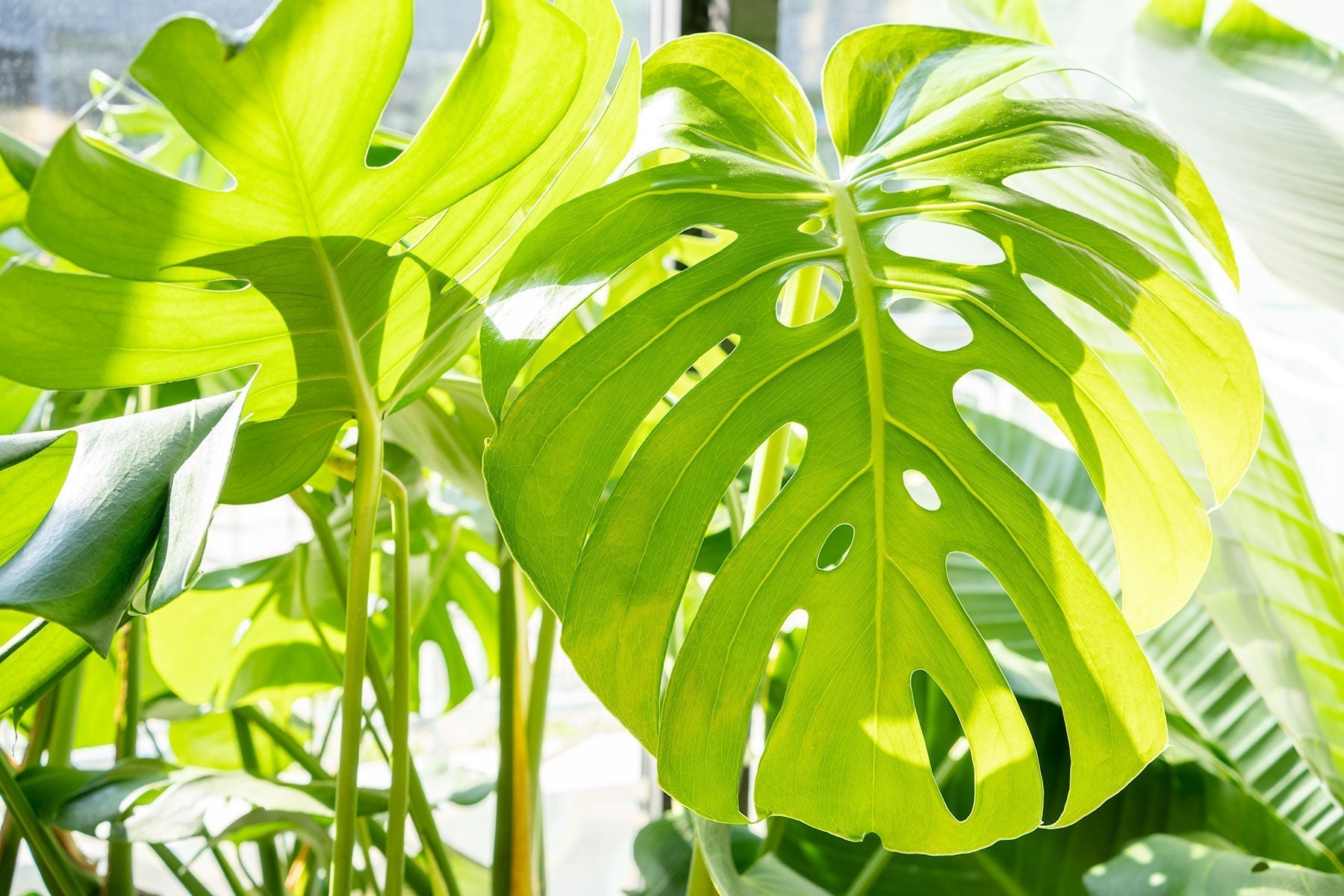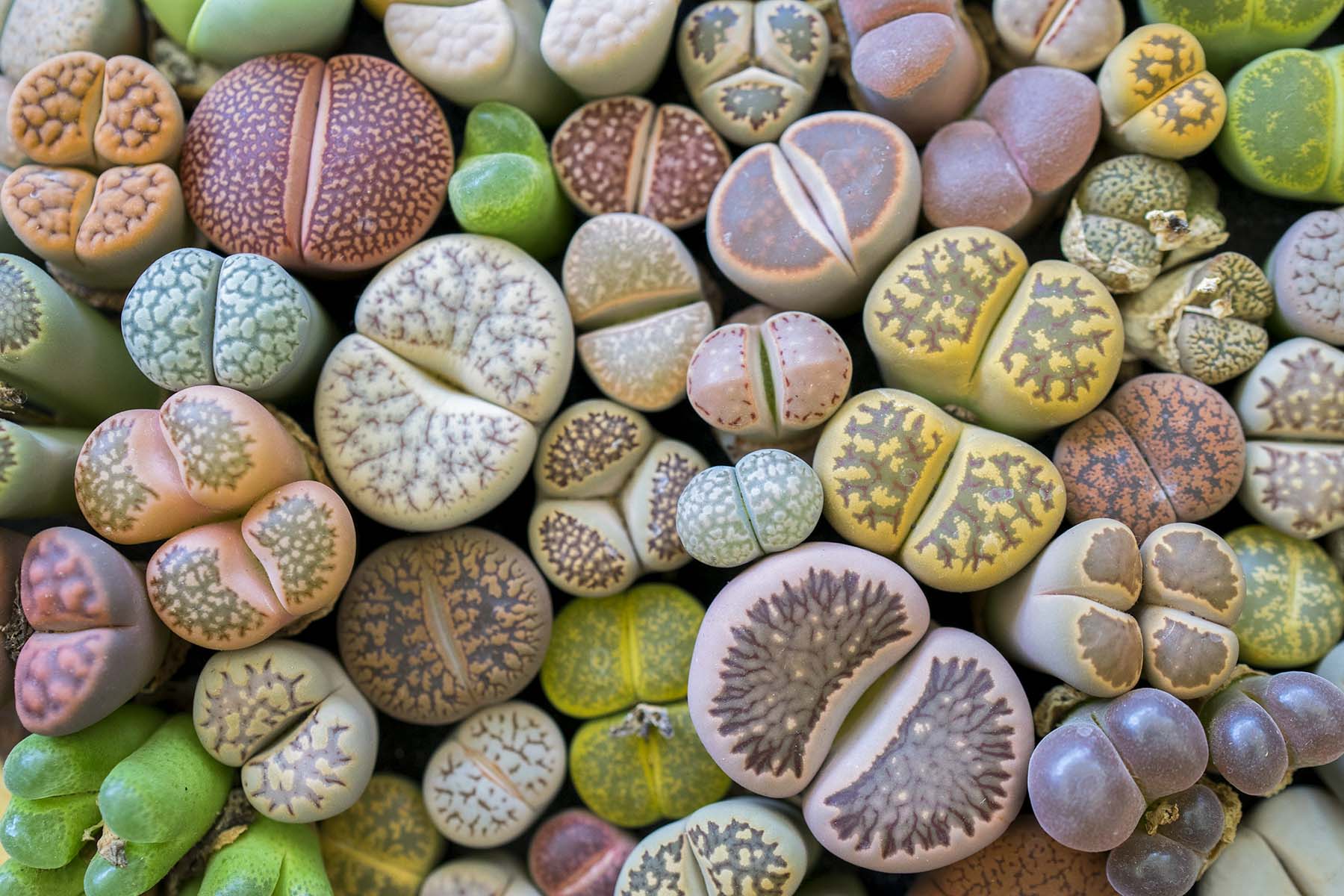
How to take care of your Monstera Deliciosa
Recognize these gorgeous, giant, split leaves? The chances are that you do as Monstera Deliciosa, or “swiss cheese plant”, foliage was very common in many prints before they became as popular of a houseplant as they are now. Many clothes, wallpapers, notebooks, napkins, you name it, had this distinctive leaf pattern all over them. Even if you weren’t into plants before, this monster can turn anyone into a plant-obsessed person, I mean come on, look at those leaves!
△ Monstera Deliciosa in 10" Pot
The best thing about these plants: they are so easy to take care of and they help create a jungle-like sanctuary in your home. The only downside we can think of is that they are mildly toxic to humans and toxic to pets, so keep it up off the floor out of reach of little hands and mouths!
If you have been thinking about trying your hand at plant ownership and care, this is the plant for you. If you have owned plants for a long time but never owned one of these guys, this is also the plant for you. They are affordable, impressive, and you hardly ever have to worry about them, as long as you follow our care guide below. So let’s get into caring for your new plant baby!
Monstera Deliciosa Light Requirements
A bonus with this houseplant, it’s a beginner’s dream as it can handle most light conditions! The lowest light conditions that this plant can handle include the following:
- Next to a North-facing window
- A few meters back from a South, West, or East facing window
- Next to a South, West, or East facing window that is facing a courtyard or is blocked by a nearby building
Many plants are sold saying that they thrive in low to high light, however, that is not necessarily the case. There are quite a few options for plants that can be placed in lower light spaces, but they won’t thrive. They will more often just retain the shape that they come in, or become what people call “leggy”, meaning their leaves are more spaced out and growth is less compact. Monstera’s are vining plants so they will literally reach towards the light.
In that case, here are some ideal light conditions for you to keep your Monstera Deliciosa looking nice and full:
- Next to, or close by, a South, Southwest, or West-facing window that has sheer curtains for some bright, indirect light (keep in mind, they cannot handle full sun so the curtains keep the leaves from getting burned by the sun)
- About 5-10ft away from a South, Southwest, or West-facing window without curtains
- Next to a North or East-facing window
As Monstera’s age, their leaves go from being nice and full, to becoming split (or fenestrated) and the more light they get, the larger and more fenestrated the new leaves will be. These splits do mainly occur with age but they become more pronounced the happier the plant is.
Tip: If you want to spoil your plant and make it very happy, purchase or make a moss pole for your plant to train on and grow up!
To learn more about light, checkout our houseplant lighting guide.
Monstera Deliciosa Watering Requirements
In the Spring/Summer months, when you notice the top of the soil appears dry and the first couple inches of soil are dry to the touch, water the plant thoroughly until water is coming out of the drainage holes, generally every 7-10 days. Aerate the soil beforehand so that water reaches the whole root ball. Do not let it sit in water though as that can produce root rot, so if the plant is in a decorative pot, ensure all the runoff is dumped out.
In the Winter months, you can ease up on watering as plants tend to go dormant in our cold weather, about every 2 weeks when the majority of the soil is dry. Wipe or dust off the leaves more often in winter as well because that is the optimal time for pests to set up shop.
One thing to always remember: the more light your plant is getting, the more water it will need, and vice versa. If your plant is in a spot that receives very bright light, it will need more water than the Monstera placed in what I described as a lower light spot above. Keep that in mind when watering your plant and adjust your watering.
Showering your plant off every other week is also a good idea, whether with the hose outside or right inside your shower. This not only waters the plant but also washes off any dust and potential pests on those big, beautiful leaves. It also allows some moisture to reach the aerial roots, the long, brown, woody vines growing off different sections of the main stems/vines.
You can also learn more about watering in our detailed houseplant watering guide.
Humidity Tips for Monstera Deliciosa
△ Monstera Deliciosa in 6" Pot
They prefer humid environments, so if you have the time, and want to make the effort, you can:
- Place the nursery pot on top of a bed of rocks that are covered in water, which increases the humidity in the air around the plant
- Place a glass of water next to the plant, that also does something similar
- Mist all the leaves daily in the summer and weekly in the Winter
Without this humidity, you may notice some browning at the tips of the leaves but this is natural and nothing is wrong with your plant.
Fertilizing Your Monstera Deliciosa
Monstera’s are not too picky when it comes to fertilizer, and they really don’t need it that often. Fertilize once a month through the Spring and Summer months and then do not fertilize throughout the Winter. Just use a generic house plant fertilizer that any greenhouse, garden centre, or plant shop offers! We have a houseplant fertilizing guide as well, feel free to check it out.
Common Pests & Problems for Monstera Deliciosa
△ Monstera Deliciosa in 6" Peanut Planter
Thankfully, Monstera’s are usually rather unbothered by pests but they still do manage to find a way to ruin your life sometimes. Here are the most common pests/problems that you could run into with a swiss cheese plant:
Fungus gnats:
These can happen with any houseplant. They appear when the air is dry and soil stays wet, which is hard to avoid in our Winter. Some solutions are: a mix of apple cider vinegar with honey in a shallow bowl to catch them, mix one part peroxide with four parts water and pour that through the soil to kill any larvae, or place sticky fly paper strips by your plant.
Thrips:
If new leaves are growing deformed, leaves are looking bleached, or yellow spots/yellowing of leaves (not just the older leaves dying off) you may have a case of thrips. Remove any extremely damaged leaves, take your plant somewhere to wash it all off (especially the leaves), allow the leaves and stems to dry off, then treat the entire plant (stems/vines included!) with a neem oil mix or a thrips spray you can get from a garden centre.
Yellow leaves:
If the leaves aren’t turning yellow just because of age, which is a natural thing that happens, and the soil is wet, this is often a sign of overwatering. You can let the soil dry before watering again but if leaves are yellowing at an alarming rate, repot the plant into fresh soil.
Brown and crispy on the edges of leaves:
Again, if the leaves aren’t dying off just because of age, the plant is probably underwatered or there could be a salt build up. Water more often than you have been and start using filtered, distilled, or rain water.
Plant looks wilted all the time:
It may be time to repot your Monstera! Remove the plant from the nursery pot and check the roots. If they are all coiled up at the bottom, it is time to repot into a new home. Plant it in a nursery pot one size up from the current one (i.e. if it was in a 6” pot, plant it into an 8” pot, etc.), do not repot it into anything bigger as that will provide too much space for the plant and it will sit in too much wet soil.
With all that being said, good luck with your new plant! As these plants grow quite quickly, your home will look like a jungle in no time.









